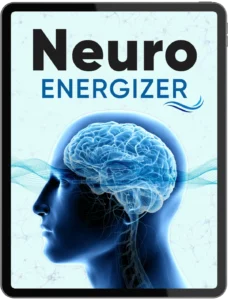If you’ve ever finished a long workday only to realize your shoulders feel tight, your hips ache, and your lower back is begging for relief, you’re not alone. Modern office life keeps us glued to our chairs for hours at a time, leading to stiffness, poor posture, and even long-term joint problems. The good news? You don’t need a gym, yoga mat, or even to leave your desk to fight back. With just a few minutes and a handful of simple movements, you can create an anti-stiffness routine that recharges your body and keeps your joints healthy.
This article will show you 5 effective moves you can do right at your desk to loosen up your muscles, restore mobility, and feel more energized—all without disrupting your workday.
Why Sitting Too Long Makes You Stiff
Humans are built to move. Yet the average office worker sits for over 8 hours a day, often with poor posture—slouched shoulders, rounded spine, and tight hips. Prolonged sitting reduces blood flow, compresses certain muscles, and causes others to weaken.
Here’s what typically happens:
- Tight hips: Sitting shortens the hip flexors, pulling your pelvis forward and straining your lower back.
- Stiff shoulders and neck: Hunching over screens creates tension in the upper back and traps.
- Poor circulation: Staying in one position slows blood flow, leading to fatigue and swelling in legs or ankles.
- Lower back discomfort: Weak core muscles and compressed discs contribute to stiffness and pain.
The solution isn’t necessarily standing all day—it’s adding movement breaks into your routine. That’s where the anti-stiffness desk moves come in.
The Science of Micro-Movements at Work
Studies show that short bouts of mobility work sprinkled throughout the day are more effective for preventing stiffness than one big workout session after work. These micro-movements increase blood flow, re-lubricate joints with synovial fluid, and gently stretch tight muscles.
Even 2–3 minutes of desk mobility can:
- Improve posture
- Reduce muscle tension
- Boost focus and energy
- Prevent repetitive strain injuries
Now let’s dive into the 5 anti-stiffness moves you can start doing today.
The Anti-Stiffness Routine: 5 Desk-Friendly Moves
Each move takes about 30–60 seconds. Together, the full routine only takes 5–7 minutes. You can repeat it 2–3 times per day for best results.
1. Seated Spinal Twist
- Sit tall in your chair with feet flat on the floor.
- Place your right hand on the backrest and gently twist your torso to the right.
- Hold for 20–30 seconds, then switch sides.
- Benefits: Relieves lower back tension and improves spinal mobility.
2. Desk Shoulder Opener
- Sit or stand and interlace your fingers behind your head.
- Open your elbows wide and gently squeeze your shoulder blades together.
- Hold for 20–30 seconds while breathing deeply.
- Benefits: Counteracts hunched posture and reduces neck/shoulder tightness.
3. Seated Hip Marches
- Sit on the edge of your chair with feet hip-width apart.
- Lift one knee toward your chest, lower, then switch legs in a slow marching motion.
- Continue for 30–60 seconds.
- Benefits: Activates hip flexors and improves circulation in your legs.
4. Desk Calf Raises
- Stand behind your chair and place your hands lightly on the back for balance.
- Rise onto your toes, hold for 2 seconds, then lower slowly.
- Repeat for 10–15 reps.
- Benefits: Boosts blood flow, strengthens calves, and reduces ankle stiffness.
5. Neck and Upper Trap Stretch
- Sit tall and gently tilt your head to the right, bringing your ear toward your shoulder.
- Use your right hand to apply light pressure for a deeper stretch.
- Hold 20–30 seconds per side.
- Benefits: Relieves neck tightness from screen time and improves range of motion.
How to Make This Routine a Habit
The biggest challenge isn’t doing the moves—it’s remembering to take breaks. Here are some practical tips:
- Set reminders: Use your phone, computer, or a smartwatch to nudge you every hour.
- Pair with habits: Do the routine right after finishing emails, before meetings, or after phone calls.
- Start small: Even if you only do 2 moves at first, it’s better than staying stiff all day.
- Involve coworkers: Encourage colleagues to join—group stretches make it more fun and less awkward.
Who Benefits Most from Desk Mobility?
This anti-stiffness routine is especially helpful for:
- Office workers who sit long hours
- Remote workers who don’t leave their desk often
- Students spending time on laptops
- Professionals traveling frequently (planes, trains, cars)
- Anyone with morning stiffness or sedentary habits
Long-Term Benefits of Desk Movement
If you stick with this daily practice, here’s what you can expect:
- Improved posture and reduced back pain
- More energy and focus during the workday
- Better flexibility and joint health
- Lower risk of repetitive strain injuries
- A healthier, more active lifestyle without overhauling your schedule
Think of these 5 moves as your reset button during the workday. By keeping your joints moving and your blood flowing, you’ll feel less stiff, more energized, and ready to perform at your best.
Final Thoughts
You don’t need fancy equipment or extra time to beat stiffness—you just need consistency. The anti-stiffness routine is simple, quick, and designed to fit seamlessly into your workday. With only 5 desk-friendly moves, you can reclaim your mobility, protect your joints, and feel better in just a few minutes.
Start today. Set a reminder, stand up, and try one of the moves right now. Your body will thank you, and so will your productivity.




